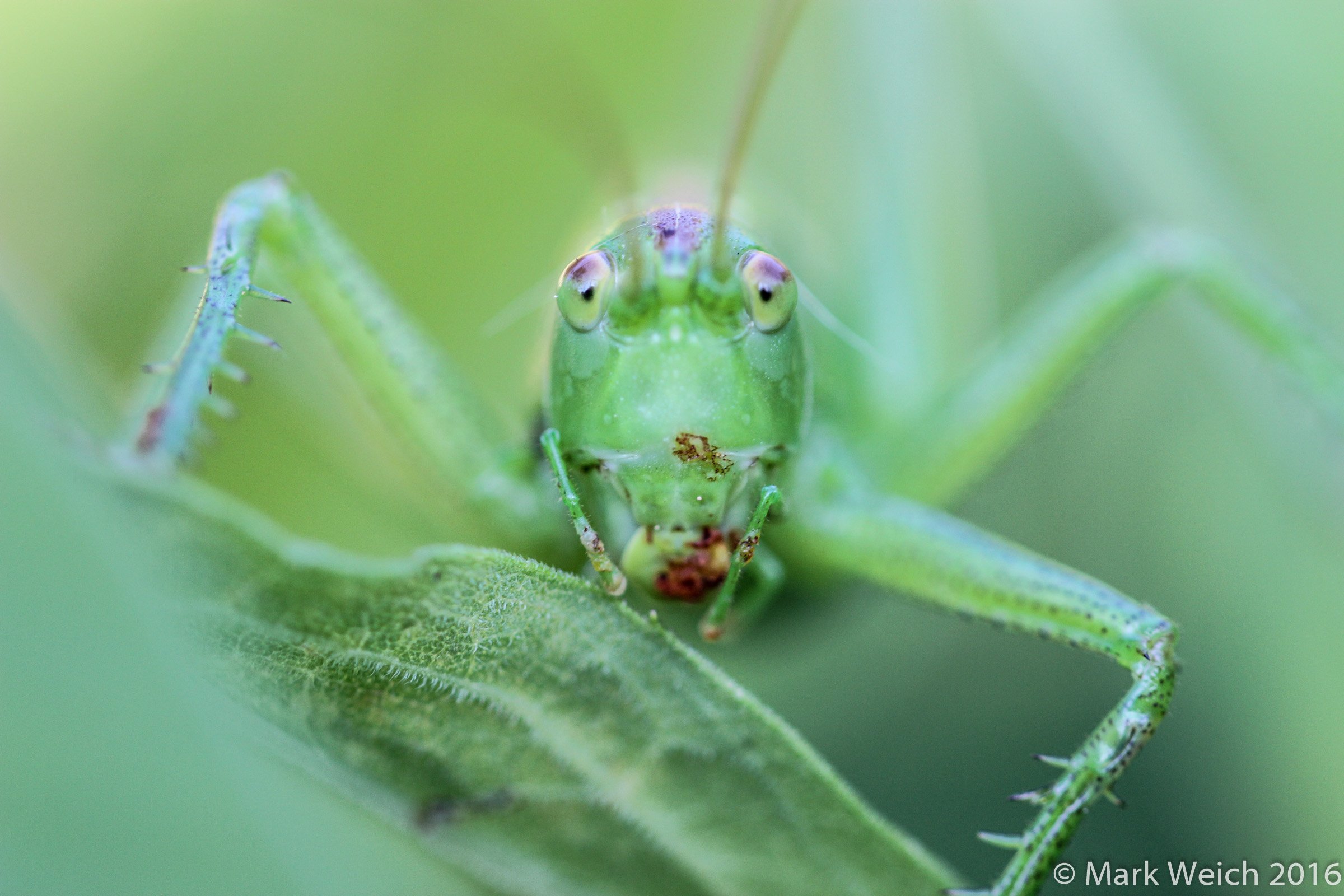 If you're a small slow moving grub, this is one face you really don't want to see. The Bush Cricket, or Katydid, while resembling a grasshopper in many ways: green, long legs, found in the grass; is different in one very important way: it's carnivorous. While not all katydids are predators, this particular species most definitly is. I imagine they mow down aphids like popcorn. I wonder about the identity of its last meal which is splattered across its face.
If you're a small slow moving grub, this is one face you really don't want to see. The Bush Cricket, or Katydid, while resembling a grasshopper in many ways: green, long legs, found in the grass; is different in one very important way: it's carnivorous. While not all katydids are predators, this particular species most definitly is. I imagine they mow down aphids like popcorn. I wonder about the identity of its last meal which is splattered across its face.
While grasshoppers have short antenae Bush Crickets have extremely long ones:
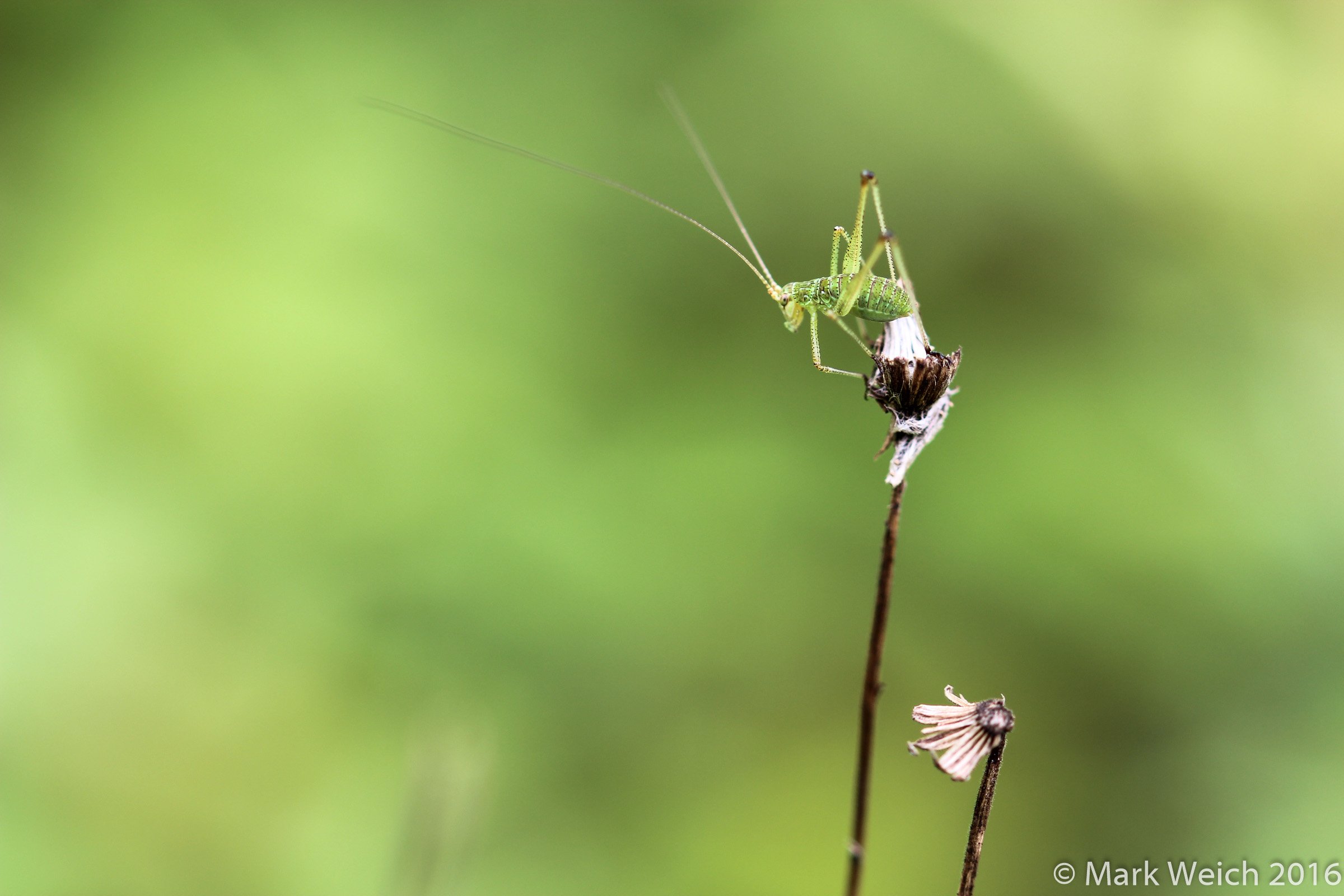
This young cricket is perched on a dandelion after the rain, its antenae are nearly four times the length of its body! Originally, I thought it was perched up there to get away from the wet grass, now however, I think it's using the high ground to search for prey.
Like most crickets they are more active at night when they silently stalk across the ground searching for sleepy insects to devour.
During the day, they rely on their camouflage to blend in with the leaves of trees and bushes. Fortunately, this near-adult katydid chose poorly, though the fence post is the correct colour, it didn't blend in very well.
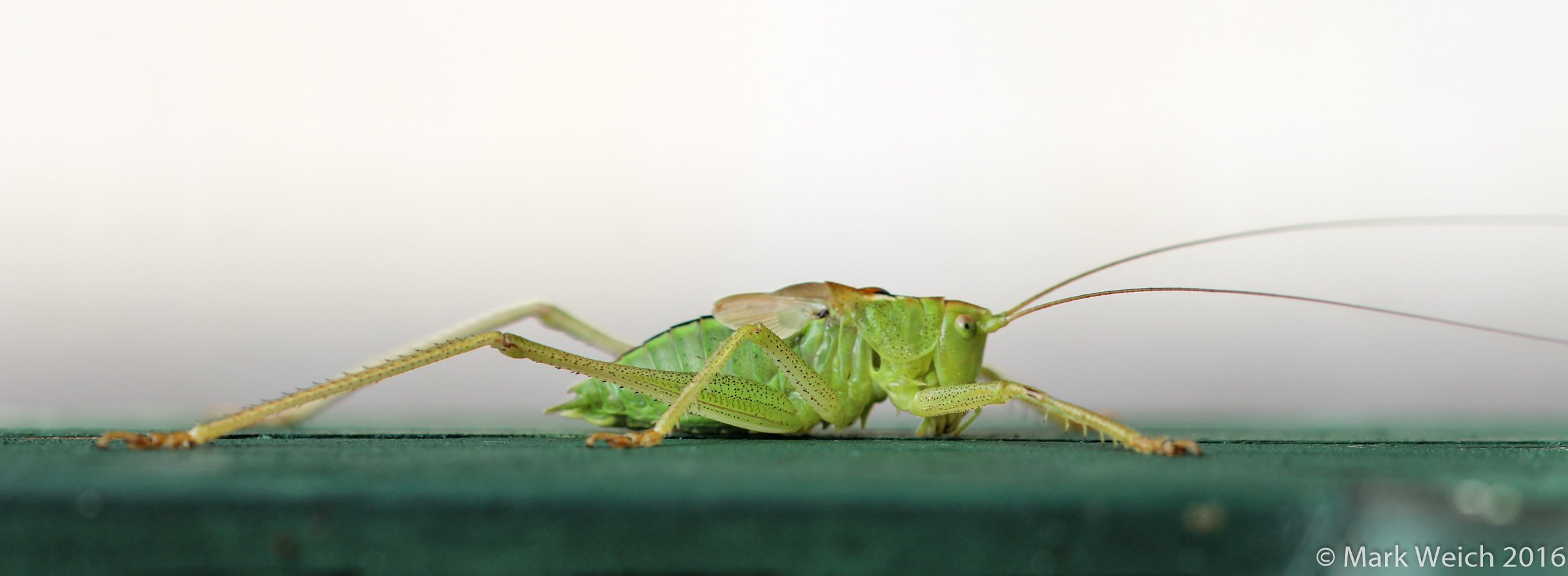
Camera trickery! It was hanging head down on the post but looks far more interesting in this orientation.
Close up, we can see one of the main spiracles just above and behind the foreleg/thorax joint.
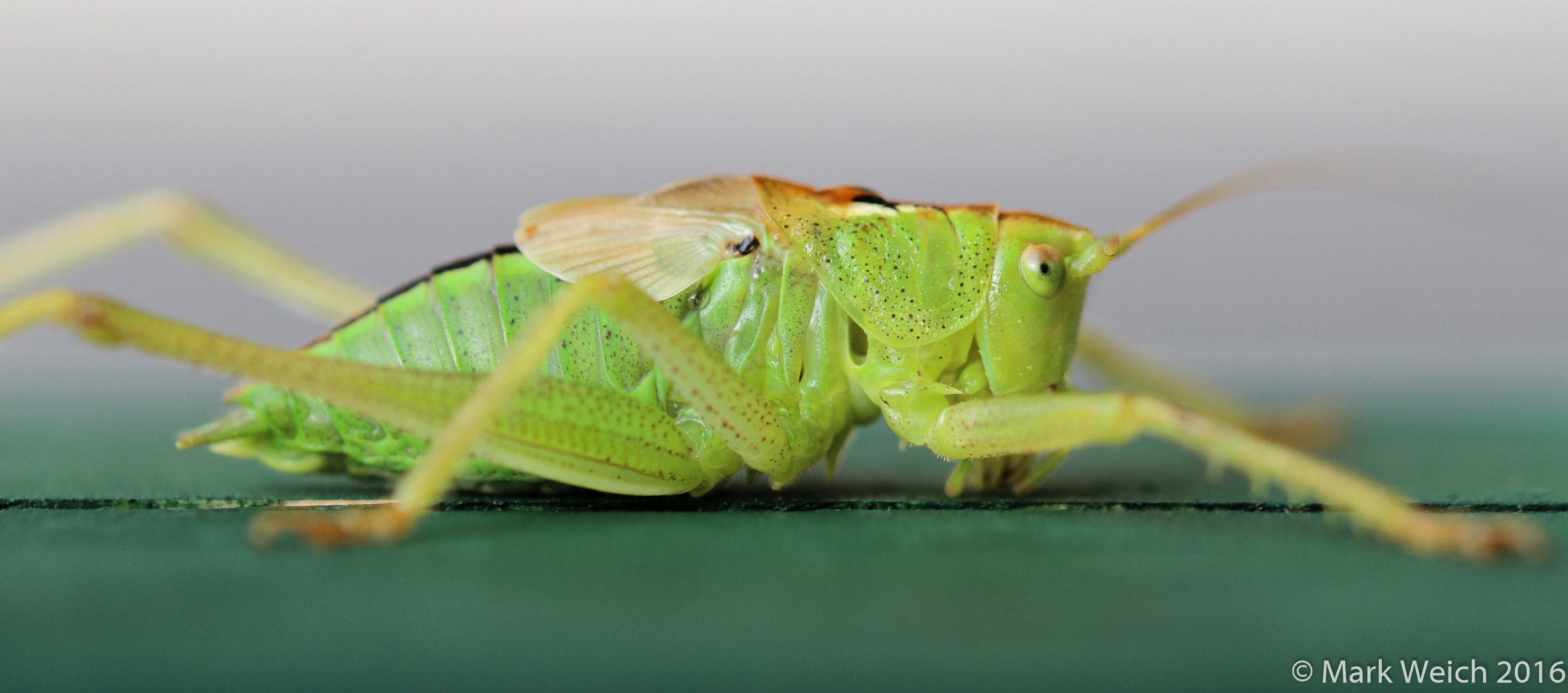
Insects don't have lungs but rather have a system of open tubes called trachea, that go to all of the different tissues and directly oxygenate their hemolymph, which is their equivalent of blood. You may see some insects abdomen pulsing and while this assists the airflow through the trachea they do not have any organs similar to vertibrate lungs. This katydid is a rather large insect and requires good airflow, hence this seemingly large spiracle.
Once it has finished its final molt and become and adult, its wings will be much longer and fully functional, as well as the female katydids developing an intimidating looking ovipositor, used to lay eggs in either the soil or directly into plant stems.
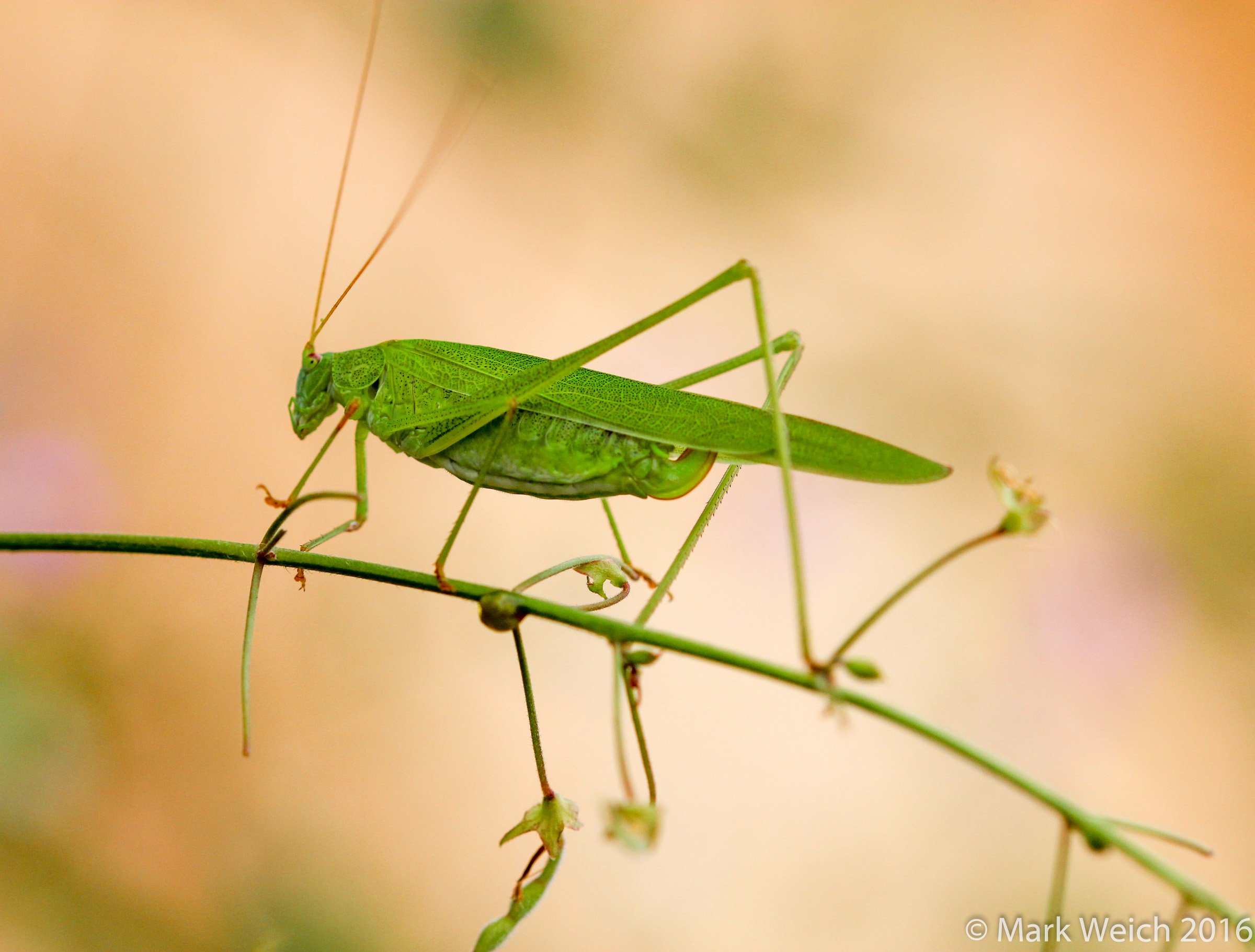
Even this large insect about 13cm long was not that easy to spot on this otherwise bare branch. It quite closely resembles a leaf, having a very narrow body and remaining quite still.
Sources for facts and statistics:
Tettigoniidae
Insect Respiration
Comments and feedback are always welcome.
Please upvote and follow to see the next installment in your feed!
Resteem if you think your followers would enjoy this post, thanks!
Also, if you like macro photography, check out some of the earlier posts in this series.
Little Monsters - Part I: Wolf Spiders
Little Monsters - Part II: Golden Orb Weaver
Little Monsters - Part III: Lynx Spiders!
Little Monsters - Part IV: Decorator Orb Weaver
Little Monsters - Part V: Black Back Paper Wasp
Little Monsters - Part VI: Dragonfly
Little Monsters - Part VII: Indian Fritallary
Little Monsters - Part VIII: Giant Japanese Hornet
Little Monsters - Part IX: Praying Mantis!
Little Monsters - Part X: Harlequin Ladybird!
Little Monsters - Part XI: Dragons!
Little Monsters - Part XII: Snails!
Little Monsters - Part XIII: Evil Weevils!
Little Monsters - Part XIV: Fantastic Phasmids!
Little Monsters - Part XV: To Bee or not to Bee?
Little Monsters - Part 16: Jumping Spiders!
Little Monsters - Part 17: Hawkmoth Caterpillars and Hawkmoths
Little Monsters - Part 18: Evil Doppelgangers - The Ant Mimic Spider
Little Monsters - Part 19: Hummingbird Hawkmoth!
Little Monsters - Part 20: Loud and Proud the Cicada!
Little Monsters - Part 21: Great Green Caterpillars!
Little Monsters - Part 22: Vespa mandarina japonica
Little Monsters - Part 23: Little Black Ants
Little Monsters - Part 24: Cranes and Robbers
Little Monsters - Part 25: Hidden in the Grass
Little Monsters - Part 26: Ammophila, Alien is real!
I maintain and reserve copyright on all of my photos.
